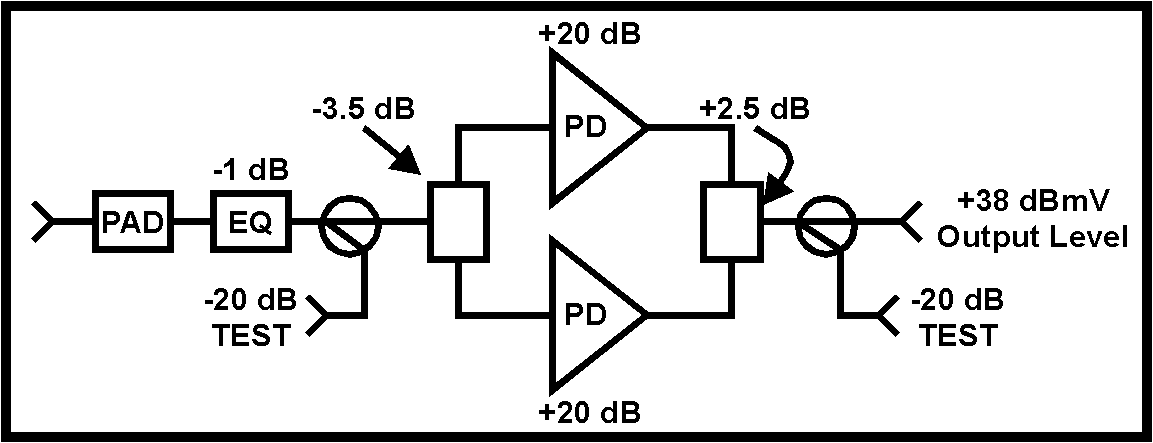Amplifier Operational "Sweet Spot" Page 2

< CLICK HERE FOR PAGE 3 >
Amplifier Operational "Sweet Spot" Page 2 |
| A comparison of the manufacturer's specifications for the RF hybrid amplifier chips demonstrates that CTB gets better as the level of technology is increased. Push-pull is the lowest common denominator widely used today. Power-doubled RF hybrids have 5 to 6 dB better CTB than push-pull hybrids at a given output level. Push-pull hybrids usually have a noise figure advantage over power-doubled hybrids. That is why push-pull hybrids are used at the input of an amplifier module where signal levels are low. There are some exceptions to this rule as I will explain later in the text. |
| A Quadra-Powered RF amplifier uses two power-doubled output hybrids on parallel signal paths. (I know, I heard your confusion.) In the 1980s, SA had a line of amps they called "parallel" hybrids. The first power-doubled trunk modules made by QRF used "parallel path" push-pull hybrids to achieve the same performance we get today from a single power-doubled hybrid. When real power-doubled hybrids are dropped into the parallel amplifier pathways, the amplifier is said to be "Quadra-Powered." The advantage is better CTB performance or higher output levels. |
| In each case, the power addition of two sets of "in-phase" RF signals will produce a 3 dB power addition at every frequency. In the real world, the magnetic loss of the ferrite "RF splitter / combiner" is around 0.5 dB. The net signal gain is then 2.5 dB. Remember that the same splitter has 3.5 dB splitting loss to feed the input of each hybrid in the parallel paths. The block diagram below of the Quality RF Services QRAM750-17Q headend amplifier depicts this configuration. |
 |
| Looking at the diagram above, the levels at each point in the RF
path become apparent. The -20 dB directional couplers have about 0.5 dB through
loss. With the +38 dBmV output, the hybrids are each
producing an output level of +36 dBmV. The input level to the hybrids would
be 20 dB less or +16 dBmV. The noise figure for a modern 750 MHz, 20 dB silicon
power-doubled hybrid (MHW7205C) is 7 dB at 750 MHz. Using an older similar hybrid
with a 9 dB noise figure, the amplifier is still 7 dB over the rated noise figure of the
hybrids with levels shown above. With this information, it becomes obvious that the
output of this RF amplifier could be lowered by as much as 3 dB without a significant
impact on the final carrier-to-noise ( C/N ) ratio of the signals being amplified.
The performance advantage is a 2 dB improvement in CTB for every 1 dB of output level
reduction. < CLICK HERE FOR PAGE 3 > |